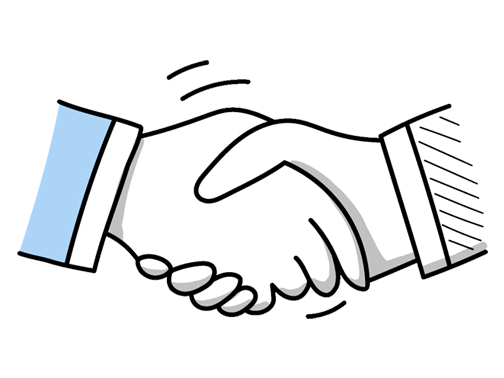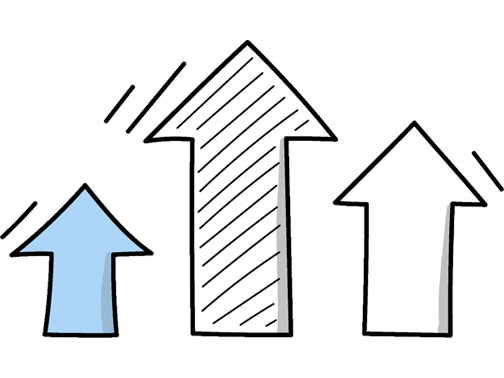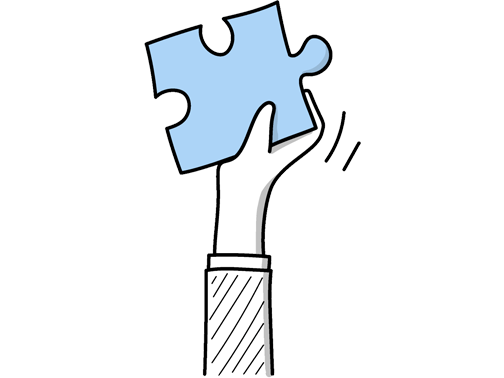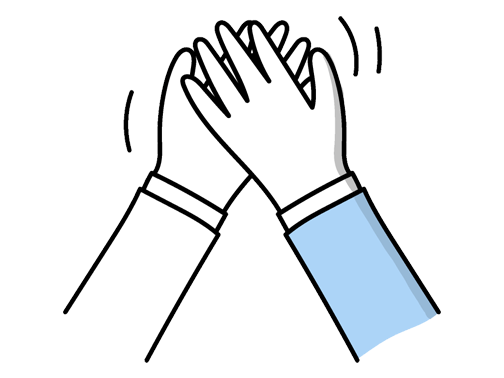Welder Interview Questions (2025 Guide)
Find out common Welder questions, how to answer, and tips for your next job interview
Practice Interviews Online - Identify your strengths and weakness in a realistic Welder mock interview, under 10 minutes
Practice Now »Welder Interview Questions
Employers ask this to see if you are proactive about learning and improving your skills. You should say you regularly read industry publications, attend workshops or training, and follow experts to stay current with welding advancements.
Example: I keep up with new welding methods by regularly reading trade magazines and visiting industry websites. I also attend local workshops or training sessions when I can, which helps me see the latest tools and practices in action. Talking with colleagues and sharing experiences on job sites often gives me practical insights that you won’t find in manuals, which keeps my skills sharp and current.
What they want to know is how you balance speed and quality under pressure to deliver reliable work on time. You need to explain that you prioritize tasks with a clear schedule, pay close attention to weld quality by checking your work carefully, and keep your team informed about your progress and any issues.
Example: I stay organised by focusing on the most urgent tasks first without cutting corners on the weld quality. I make sure to double-check my work as I go, which helps avoid rework later. If I see any delays coming, I keep the team informed so we can adjust plans if needed. For example, on a recent project, early communication helped us meet the deadline while keeping the welds strong and safe.
Hiring managers ask this question to see how you identify and solve problems under pressure, ensuring quality work. You need to briefly explain the welding issue you faced, the steps you took to fix it, and the positive result or lesson learned.
Example: Sure! Here’s a concise, natural-sounding response for your interview:
Once, I noticed uneven weld beads causing weak joints on a steel frame. I reviewed the machine settings and found the amperage was off. After adjusting it and doing test runs, the weld quality improved significantly. This experience reinforced the importance of regularly checking equipment settings to maintain consistent weld standards.
This question helps the interviewer see your problem-solving skills and creativity in real work situations. You need to clearly describe the challenge you faced, explain the unique method you used to solve it, and share the positive results that came from your solution.
Example: In one job, I faced a tricky joint where traditional welding caused warping. To tackle this, I adjusted the sequence, welding smaller sections and allowing controlled cooling between passes. This approach kept the metal stable and ensured a strong, clean weld. It saved time on fixes and made the final product much more reliable, which the client really appreciated.
Interviewers ask this question to understand your hands-on skills and the types of projects you've handled. You need to clearly describe the kinds of welding techniques you've used and the materials or environments you've worked with.
Example: Sure! Here’s a polished, natural-sounding response under 70 words:
I’ve worked with various welding techniques, including MIG and TIG, mainly in structural and fabrication projects. One role involved repairing steel frameworks for construction sites, where precision and safety were critical. I’m comfortable reading blueprints and adapting to different materials, always ensuring strong, clean welds. Working in busy workshops has taught me to manage time well while maintaining quality, which I find rewarding.
What they want to know is that you prioritize safety and understand the risks involved in welding. You need to say that you always wear proper protective gear and follow safety protocols to minimize hazards.
Example: To prevent welding injuries, I always start by checking my equipment for faults and wearing proper protective gear like gloves, a helmet, and flame-resistant clothing. I ensure my workspace is well-ventilated to avoid inhaling fumes and stay aware of my surroundings to prevent accidents. For example, I once noticed a gas leak during a job and stopped work immediately to fix it safely before continuing.
What they want to know is whether you understand different welding methods and can apply them safely and effectively based on the project needs. You need to briefly explain your experience with MIG, TIG, and arc welding, highlight how you choose the right technique for specific materials or jobs, and emphasize your commitment to safety and quality standards.
Example: I’m comfortable with MIG, TIG, and arc welding, and I know how to choose the right method depending on the material and project needs. For example, I’d use TIG for thinner metals requiring precision, and MIG for quicker, thicker welds. Safety is always key—I make sure to follow all protocols and inspect my work closely to meet quality standards every time.
Hiring managers ask this question to see if you’re proactive and committed to quality work. You need to share a specific example where you took extra steps to ensure the project was done well and on time.
Example: During a recent project, we faced unexpected delays due to material shortages. To keep things on track, I stayed late to re-evaluate the welding sequence and completed some prep work myself. This helped the team pick up speed the next day and meet the deadline. It felt good to step up and ensure the project didn’t fall behind.
Questions like this help the interviewer understand your hands-on experience and technical skills with different welding tools. You need to clearly mention the specific welding equipment you have used, such as MIG, TIG, or Stick welders, and briefly highlight your proficiency with each.
Example: I’ve worked with several welding machines, mainly MIG and TIG welders, depending on the project requirements. I’m comfortable setting up and adjusting both, whether welding steel frames or more delicate materials like stainless steel. I’ve also used arc welders for heavier, structural jobs. Being familiar with the different techniques helps me adapt to various tasks and ensure strong, clean welds every time.
Employers ask this question to ensure you prioritize safety and understand the risks involved in welding. You need to say you always wear proper protective gear, ensure good ventilation, and follow all safety guidelines to prevent accidents and injuries.
Example: When welding, I always ensure my gear is up to standard—helmet, gloves, and flame-resistant clothing are a must. I check the workspace is clear of flammable materials and well-ventilated to avoid fumes. I also keep fire extinguishers nearby and stay alert to any sparks. Safety isn’t just a rule; it’s about protecting yourself and others on site every step of the way.
This question assesses your ability to choose the best welding method based on job requirements. You need to explain how you consider factors like material type, thickness, position, and desired strength to select the appropriate welding technique.
Example: When choosing a welding method, I first consider the material type and thickness, as that impacts heat and penetration needed. I also look at the project’s purpose—whether strength or appearance is the priority. For example, I’d use MIG welding for quicker, clean jobs on thinner metals but switch to stick welding for thicker, outdoor work where conditions aren’t ideal. Safety and efficiency always guide my choice.
What they want to understand is how you stay committed to doing safe, high-quality work and constantly improving your skills. You need to say that you follow all safety protocols carefully, pursue ongoing training, and set personal goals to take pride in your workmanship.
Example: What drives me is knowing that every weld I make directly affects someone’s safety and the overall quality of the project. I take pride in getting it right the first time and always look for ways to sharpen my skills, whether through learning new techniques or using better tools. Setting personal goals keeps me focused and motivated, because I want to be reliable and respected for my work.
Employers ask this to understand how committed you are to producing safe, reliable welds that meet standards. You need to say that you carefully follow welding procedures and codes, perform inspections to verify weld quality, and maintain your equipment regularly to ensure safety and integrity.
Example: To ensure my welds are strong and reliable, I always start by carefully reviewing the project specifications and setting up the equipment correctly. I routinely check my work visually and use measuring tools to spot any flaws early. Keeping my tools well-maintained and following safety guidelines helps prevent issues. For example, on a recent job, this approach helped me deliver consistent results and avoid rework.
This question checks if you prioritize safety by recognizing hazards and taking preventive steps. You need to explain how you inspect the area for dangers, set up safety gear, and communicate protocols to your team before welding.
Example: Before starting any welding job, I take a moment to check the surroundings for anything that might cause a risk, like flammable materials or poor ventilation. Then, I make sure all safety gear is in place, such as screens and proper PPE. It’s also important to have a quick chat with the team to confirm everyone knows the plan and the safety steps, so we all stay protected throughout the job.
What they want to understand is how you handle difficult situations and apply your skills under pressure. You need to describe a specific project, explain the challenge you faced, and how your actions led to a successful outcome.
Example: Sure. In a recent project, I had to weld thin stainless steel panels for a tight-fitting assembly. The challenge was maintaining strength without warping the metal. Through careful heat control and steady technique, I managed to produce clean, precise welds that met the specifications and held up under stress tests. It was satisfying to see the final product perform exactly as required.
This interview question helps assess your ability to stay organized and efficient under pressure, which is crucial in welding to meet deadlines and manage materials properly. In your answer, explain how you plan and prioritize your tasks, allocate tools and materials wisely, and adapt your workflow when unexpected problems occur.
Example: I usually start by mapping out the tasks for the day, focusing on what needs attention first. I keep a close eye on my materials and tools to make sure nothing runs short, which helps avoid delays. If something unexpected comes up, I stay flexible and find solutions quickly, like adjusting my workflow or asking for support to keep things on track and meet deadlines without compromising quality.
Hiring managers ask this question to ensure you prioritize safety and follow proper protocols when working with dangerous materials or conditions. You need to say that you always use the correct protective gear, follow safety guidelines, and stay alert to prevent accidents.
Example: When working with hazardous materials, I always prioritise safety by wearing the right protective gear and ensuring proper ventilation. If I’m unsure about a material, I double-check its safety data sheet and take extra care. For example, when welding near flammable substances, I clear the area and keep a fire extinguisher handy. Staying alert and following protocols helps me work confidently and keep everyone safe.
Questions like this assess your practical knowledge and attention to safety in welding. You need to explain checking the machine settings, selecting the correct electrode, adjusting the current, and ensuring proper safety gear before starting.
Example: Setting up a welding machine starts with checking the power supply and ensuring it matches the machine’s requirements. Next, select the appropriate welding method and wire or electrode for the job. Then, adjust the voltage and current settings based on the material thickness. For example, thinner metals need lower settings to avoid burn-through. Finally, test on a scrap piece to confirm everything runs smoothly before starting the actual weld.
Hiring managers ask this question to understand how you ensure the quality and reliability of your welds. You need to say that you perform immediate visual inspections to spot defects, analyze the cause by reviewing welding parameters and materials, and then adjust your technique or settings to fix and prevent issues.
Example: When I notice a potential problem in a weld, I first inspect it carefully, sometimes using visual checks or simple tools like gauges. I then consider factors like material, technique, or settings that might have caused the issue. Once pinpointed, I adjust my process—whether it’s tweaking heat settings or cleaning the surface—to fix the defect and make sure it doesn’t happen again, ensuring the weld is strong and reliable.
This question checks how you manage time and resources under pressure to keep projects on track. You need to say that you assess deadlines and urgency, plan your work and resources efficiently, and communicate priorities clearly with your team and supervisors.
Example: When managing several welding projects, I first look at which deadlines are tightest and which tasks impact other parts of the job. I then plan my time and tools to keep everything moving smoothly. Clear communication with the team helps us stay coordinated—like when I had to adjust priorities on site to meet a urgent repair deadline while keeping other work on track.
This interview question aims to assess your practical welding skills and problem-solving abilities in specialized scenarios. You need to briefly describe a specific welding technique you used, the challenges you encountered, and how your work met quality and safety standards.
Example: Yes, I worked on a pipeline project that required TIG welding on stainless steel, which demanded precision and cleanliness. The main challenge was avoiding contamination, so I ensured strict cleaning protocols and controlled heat input carefully. By maintaining these standards, the welds were strong and met both quality and safety regulations, contributing to a successful, leak-free installation that passed all inspections.
Interviewers ask this to ensure you understand the safety measures critical to welding and can protect yourself from hazards. You need to clearly name key PPE like a welding helmet with a protective lens, gloves, and fire-resistant clothing, and explain each item's purpose, showing your knowledge of safety standards.
Example: When welding, I always wear a flame-resistant jacket and gloves to protect against sparks and heat. A welding helmet with the right shade lens shields my eyes and face from intense light and UV radiation. Steel-toe boots keep my feet safe from heavy objects. Following these precautions helps me stay safe and comply with UK safety standards, ensuring I work efficiently without risking injury.
Hiring managers ask this to see if you can learn and grow from criticism, which is crucial for quality and safety in welding. You should say you listen carefully to feedback, make adjustments to improve your welding, and stay respectful and positive when receiving criticism.
Example: I see feedback as a valuable part of improving my craft. When someone points out areas where my welding could be better, I listen carefully and consider how to apply their advice. Staying open and positive helps me learn faster. For example, I once adjusted my technique after a colleague’s suggestion and ended up producing stronger, cleaner welds, which made a real difference on the job.
Employers ask this to see how you handle challenges and maintain safety and quality. You should say you quickly identify the problem, adjust your technique or settings to fix it, and inform your team while documenting what happened.
Example: If I run into an unexpected issue during welding, I first take a moment to understand what’s causing it. Once I’m clear on the problem, I find a practical and safe way to fix it, keeping quality in mind. I also make sure to let the team know what happened and how I resolved it, so we all stay on the same page and can prevent similar issues in the future.
This interview question helps the employer understand your hands-on experience and versatility with different metals, which is crucial in welding jobs. You need to briefly mention the specific materials you have welded, such as steel, aluminum, or stainless steel, and highlight your familiarity with their unique welding techniques.
Example: In my welding experience, I’ve worked with a variety of metals including mild steel, stainless steel, and aluminium. Each material brings its own challenges, like aluminium’s tendency to warp or stainless steel’s need for precise heat control. For example, while fabricating structural frames, I often dealt with mild steel, and stainless steel was common in projects requiring corrosion resistance. These experiences have helped me adapt my techniques accordingly.
Ace your next Welder interview with even more questions and answers
Common Interview Questions To Expect
The interviewer is looking for a brief summary of your background, experience, skills, and career goals. Focus on relevant information related to the job and company.
Example: I've been working as a welder for the past 5 years, specializing in MIG and TIG welding techniques. I have experience working on various projects in the automotive and construction industries. My goal is to continue honing my skills and eventually become a certified welding inspector.
The interviewer is looking for you to highlight your key skills, abilities, and qualities that make you a strong candidate for the welding position. Be sure to focus on strengths relevant to the job.
Example: I would say my biggest strengths are my attention to detail, my ability to work well under pressure, and my strong problem-solving skills. These qualities have helped me consistently produce high-quality welds and meet project deadlines in my previous roles.
The interviewer is looking for your long-term career aspirations, your motivation, and how this role fits into your overall career plan. Be honest and specific about your goals.
Example: My career goal is to become a certified welding inspector and eventually start my own welding business. I am motivated to continuously improve my skills and knowledge in the welding industry. This role as a welder is a stepping stone towards achieving my long-term goals.
The interviewer is looking for how you handle constructive criticism, your ability to reflect on feedback, and how you have used criticism to improve your work. You can answer by discussing a specific situation, your reaction, and the outcome.
Example: Sure! One time, a supervisor pointed out that my welds were not meeting the quality standards. I took their feedback seriously, asked for specific areas of improvement, and practiced those techniques. As a result, my welds improved significantly and I received positive feedback on my work.
The interviewer is looking for insight into what drives and inspires you in your career as a welder. You can answer by discussing your passion for the work, desire for personal growth, or commitment to producing high-quality results.
Example: What motivates me as a welder is my passion for creating strong and durable structures. I love the challenge of working with different materials and techniques to produce high-quality results. Seeing the finished product and knowing that I played a part in its creation is what keeps me motivated every day.
Company Research Tips
The company's official website is a goldmine of information. Look for details about the company's history, mission, vision, and values. Pay special attention to any information about their products, services, and target markets. If they have a blog or news section, read the recent posts to understand their current projects and initiatives. This will give you a good understanding of the company's operations and culture.
Tip: Don't just skim through the website. Take notes and try to understand how your role as a welder fits into their operations.
Social media platforms like LinkedIn, Facebook, and Twitter can provide valuable insights into the company's culture and values. Look at their posts, comments, and interactions with customers. LinkedIn can be particularly useful to understand the company's structure, key employees, and recent updates. You can also find information about the company's reputation among its employees and customers.
Tip: Look for any posts related to the company's welding projects or initiatives. This can give you an idea of the kind of work you might be doing.
Understanding the industry trends can help you understand the challenges and opportunities the company is facing. Look for news articles, reports, and blogs about the welding industry in the UK. This can give you an idea of the latest technologies, regulations, and market trends. You can use this information to demonstrate your industry knowledge during the interview.
Tip: Try to relate the industry trends to the company's operations. For example, if there's a new welding technology, discuss how it can benefit the company.
Understanding the company's competitors can give you insights into the company's position in the market. Look for information about the competitors' products, services, and strategies. This can help you understand the company's unique selling points and competitive advantages. You can use this information to demonstrate your understanding of the company's market position during the interview.
Tip: Don't criticize the competitors during the interview. Instead, focus on the company's strengths and how they differentiate from their competitors.
What to wear to an Welder interview
- Clean, neat work clothes
- Safety boots or shoes
- Long-sleeved shirt
- Dark colors to hide dirt or grime
- Avoid loose clothing or jewelry
- Bring welding helmet if owned
- Wear hair up or under a hat





